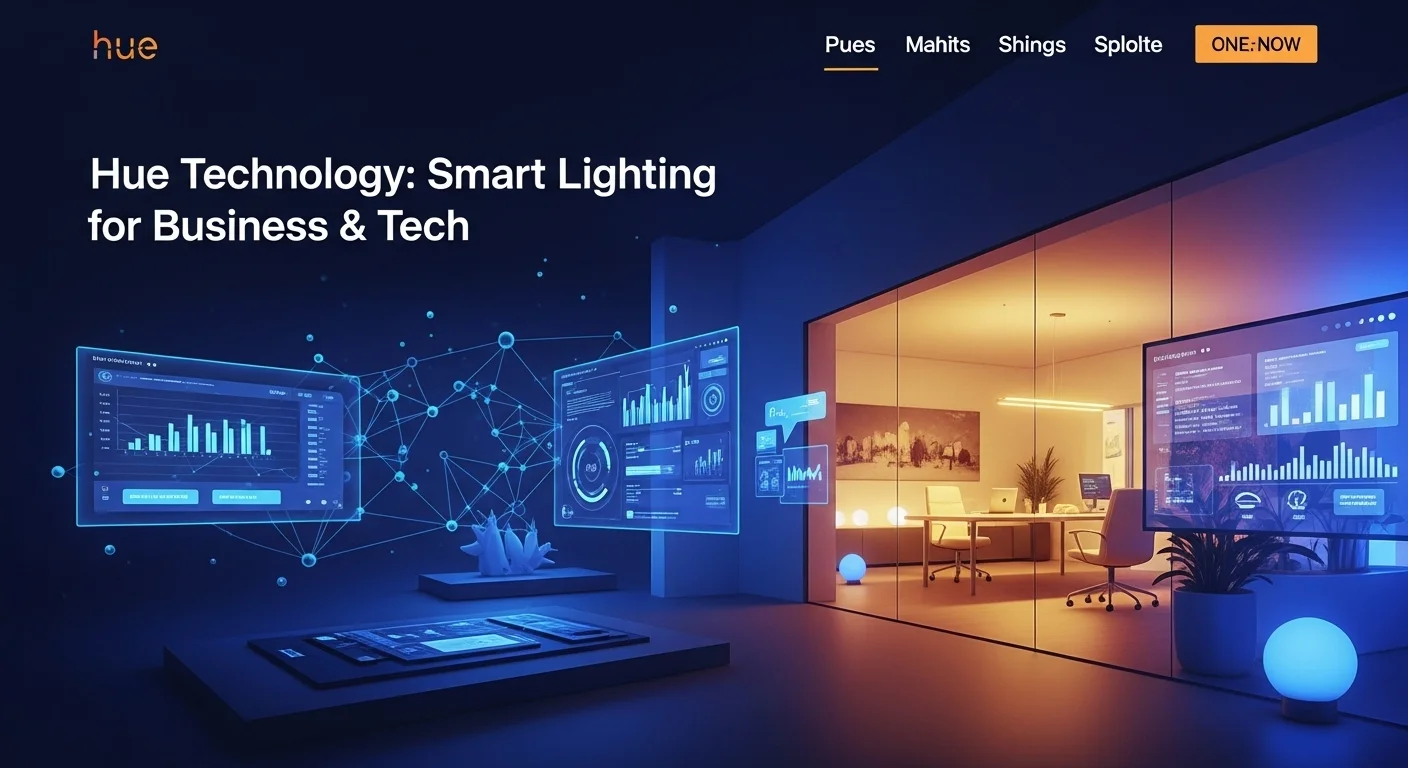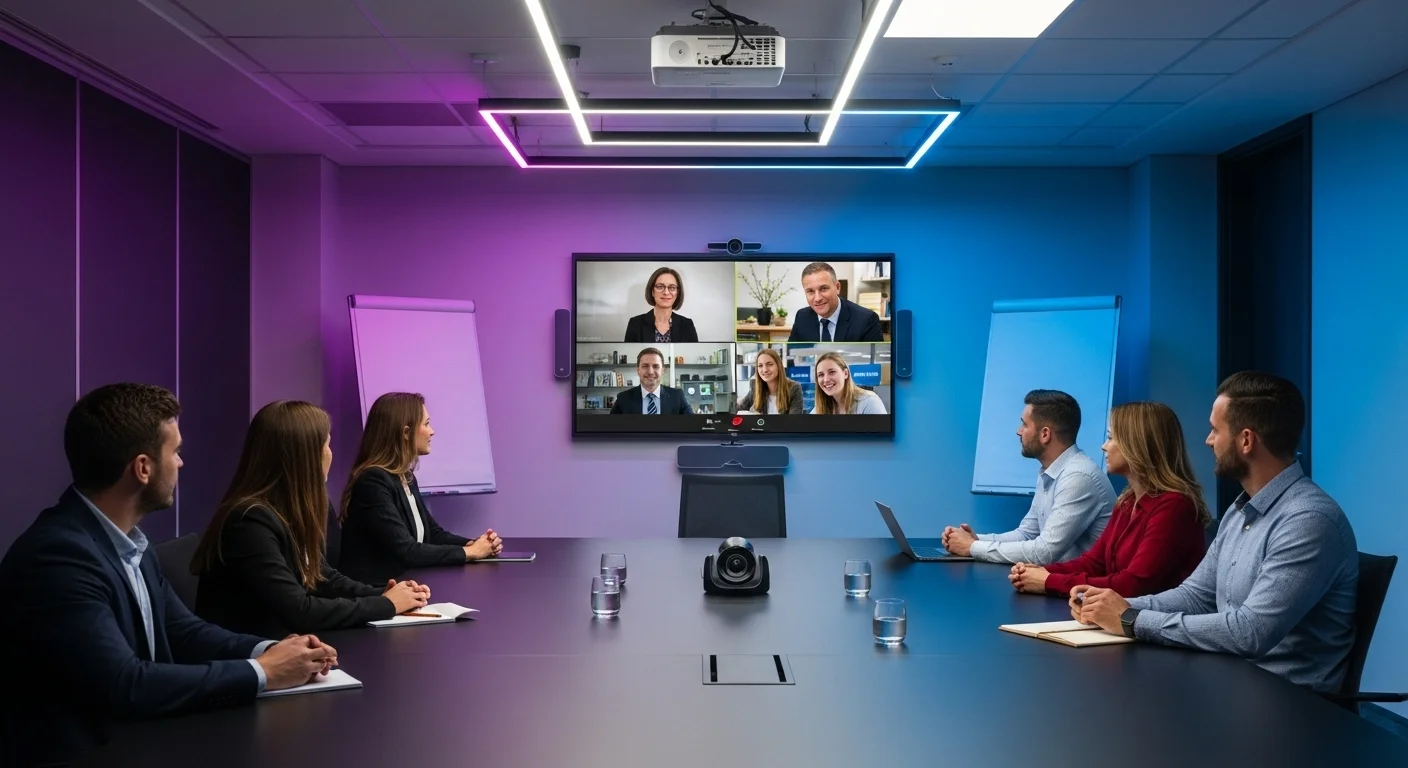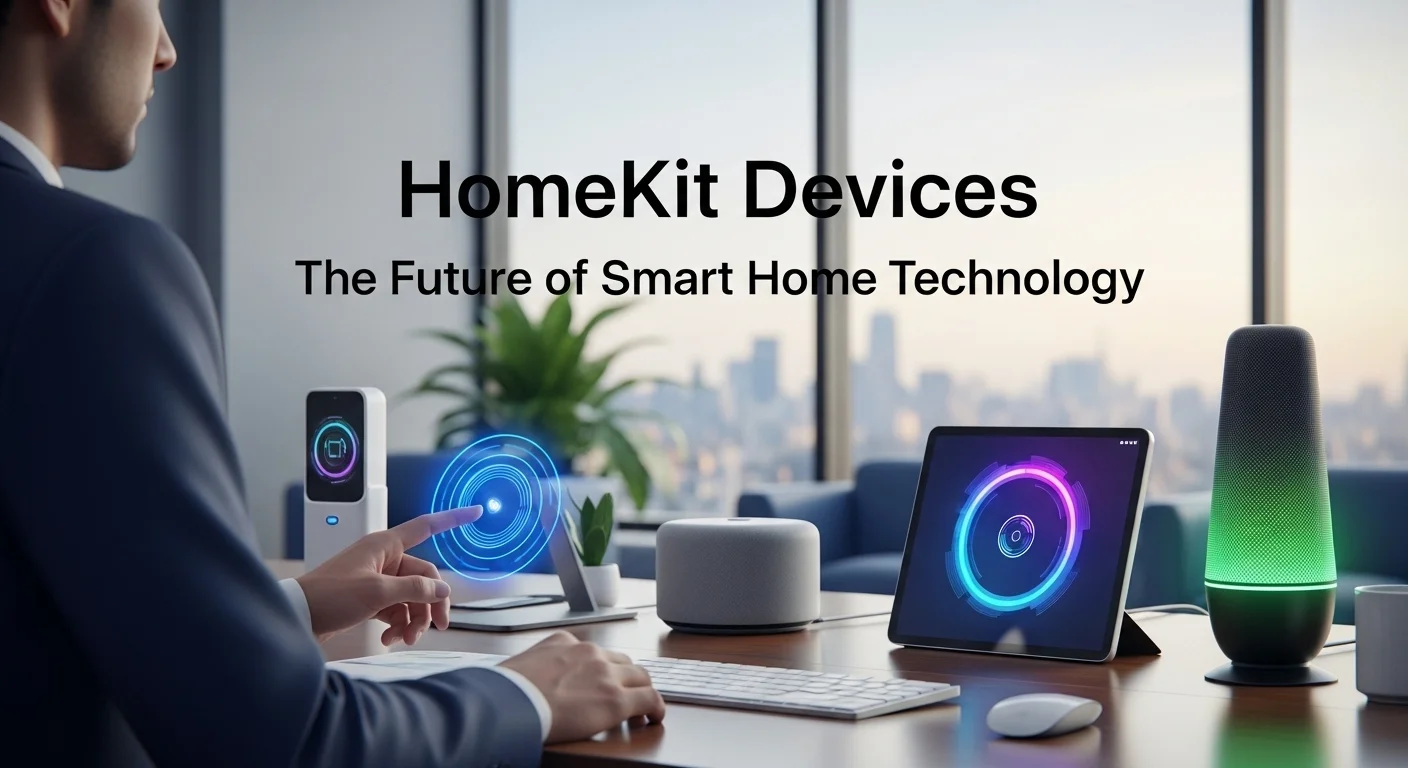Philips Hue Explained: From Smart Home Fun to a Powerful Business Tool

Executive Summary
I remember when Philips Hue was just a cool gadget for tech enthusiasts. Now, I see it everywhere in the professional world. It's grown from a simple smart bulb system into a serious tool for businesses. Think retail stores using light to guide shoppers, or offices boosting productivity with light that mimics the sun. For developers and tech professionals, it’s a fascinating playground for IoT and automation. I want to walk you through how the Hue ecosystem, powered by its central controller, has become a key piece of modern smart building technology and a genuine game-changer for innovative companies.
Table of Contents
Table of Contents
- What is Philips Hue and Why Does It Matter?
- A Look at the Core Components
- How Businesses Are Using Hue
What is Hue and why is it important in Technology?
Philips Hue completely changed the way we think about light. It's no longer just a switch on the wall; it’s an active, intelligent part of our homes and businesses. At its simplest, Hue is a wireless lighting system that lets you control the color, brightness, and schedule of your lights from your phone. But its real importance in technology is much bigger. In my experience, it's one of the best and most user-friendly introductions to the Internet of Things (IoT). It’s a gateway for people and businesses to start experimenting with smart automation because it just works. The whole system has three key parts: the smart LED bulbs, a central hub called the Hue Bridge, and the app on your phone. This simple setup creates an incredibly powerful platform for everything from making your living room cozier to creating a data-driven, responsive commercial environment.
The secret sauce behind Hue is its use of the Zigbee communication protocol. I've worked with many smart home systems, and this choice is a major reason for Hue's reliability. Unlike your home Wi-Fi, which can get bogged down with laptops, phones, and TVs, Zigbee is a special network just for your smart devices. It ensures your lights respond instantly without slowing down your internet. The Hue Bridge, which I often call the main philips hue light controller, connects to your router and acts as a translator, turning commands from your app into Zigbee signals for the bulbs. This hub-based system is robust, allowing you to connect up to 50 lights and accessories, which is more than enough for most homes and small businesses. Plus, Hue is looking to the future by adopting the new Matter protocol, which means it will play nice with even more smart devices from other brands down the road, cementing its place as a leader in the field.
The Core Components: A Closer Look
To really appreciate Hue, you need to understand its parts. The smart bulbs are little wonders. They're not just energy-efficient LEDs; they have a tiny radio and computer chip inside. They come in all shapes and sizes, from standard bulbs and light strips to spotlights and standalone lamps. You'll generally see three types: 'White' (which is dimmable), 'White Ambiance' (which lets you change from a warm, cozy white to a cool, energetic white), and 'White and Color Ambiance' (which gives you the full rainbow of 16 million colors). This variety is what gives you such fine-tuned control over the feeling of a space.
The real brain of the operation, the philips hue light controller or Hue Bridge, is what makes the system truly smart. It's the device that stores all your settings, custom scenes, and schedules. This means your automations will run like clockwork, even if your phone is off or you're not home. It also gives you remote access, so you can turn lights on and off from anywhere in the world. I've used this feature countless times for security, making my house look occupied while on vacation. For a business owner, it's invaluable for managing their store or office remotely. Accessories like the Hue Dimmer Switch or Motion Sensor add another layer of convenience. The dimmer gives you that classic wall switch feel, while the motion sensor unlocks powerful automation. For example, a simple hue motion sensor homekit automation can be set up to not just turn on a light but also adjust your thermostat and lock the back door when it detects you've left a room. That's when you see how a home automation philips hue system becomes more than just lights; it becomes the backbone of a truly smart space.
Business Applications and Commercial Importance
While many people know Hue from a home setting, its impact on the business world is where I've seen its technology truly shine. It offers real, measurable returns by improving customer experiences, boosting efficiency, and even strengthening a brand's identity.
In retail, lighting is now a powerful marketing tool. I've worked with stores that use Hue to create a specific mood that matches their brand—think bright and vibrant for a sportswear shop, or soft and luxurious for a boutique. They can program dynamic lighting to draw attention to new products or sales racks. Imagine a clothing store where the light is cool and crisp in the morning to make shoppers feel energized, and then shifts to warmer tones in the evening for a more relaxed vibe. This isn't just for show; it can genuinely influence how long customers stay and what they buy.
The hospitality world—hotels, restaurants, bars—is all about creating an experience. Hue lets them do this with light. A hotel can have a 'Welcome' scene that gently illuminates a room when a guest first walks in. Restaurants can automate their lighting to transition perfectly from a bright, bustling lunch service to a more intimate, low-lit dinner atmosphere. This kind of automated philips hue lights control takes the guesswork out of setting the mood and frees up staff to focus on customers. And the energy savings are a huge bonus, with lights automatically dimming or shutting off in empty areas.
The modern office is another perfect fit. I'm a big believer in human-centric lighting, which is about tuning indoor light to support our natural body clocks. Using Hue White Ambiance bulbs, an office can have cool, blue-toned light in the morning to help everyone wake up and focus, then gradually shift to a warmer, softer light in the afternoon to reduce eye strain. I've seen firsthand how this can improve mood and productivity. You can also create a philips hue custom automation for meeting rooms, where lights automatically turn on for a presentation and then off again when everyone leaves. It’s these smart, practical applications that turn a building's lighting from a passive utility into an active, intelligent system that works for the people inside it.

Complete guide to Hue in Technology and Business Solutions
When you really dig into the Philips Hue ecosystem, you discover a platform with serious technical depth for developers and real strategic value for businesses. It's not just about turning lights on and off with an app. The system is layered, allowing for everything from simple voice commands to complex, code-driven automations. This is why it works so well for both a family in their home and a large-scale commercial installation.
Technical Methods and Integration
The magic of Hue is unlocked when you connect it to other things. The main way to do this is with the Philips Hue API. For anyone who likes to tinker or for professional developers, the API is a toolkit that lets you talk directly to the Hue Bridge. It opens up a world of possibilities for a truly philips hue custom automation that goes far beyond the official app. I've seen developers build custom dashboards that flash stockroom lights when inventory is low or create hospitality apps that let hotel guests control their room lighting from their own phone. The API is well-documented and has a huge community, making it an incredible resource.
If you're not a coder, don't worry. You can still create amazing integrations using platforms like IFTTT (If This Then That), Amazon Alexa, Google Assistant, and Apple HomeKit. These services are the friendly glue of the smart world. IFTTT lets you create simple rules like, 'If my Nest camera spots a person, turn my front porch light on.' Voice assistants like Alexa and Google make philips hue lights control effortless. I find this incredibly useful not just for convenience at home, but for creating accessible environments in commercial or healthcare settings.
In my opinion, however, Apple HomeKit is where you can see some of the most powerful out-of-the-box automations. A hue motion sensor homekit automation is miles ahead of what you can do in the Hue app alone. Inside HomeKit, you can use the motion sensor as a trigger for a whole chain of events with specific conditions. For example, I have one set up that says: 'If the hallway motion sensor detects movement after 11 PM, AND my front door is locked, turn the hallway light on to a dim, red nightlight. BUT, if the front door is unlocked, blast all the lights to 100% brightness and send me an alert.' This level of detailed, conditional logic is what transforms a home automation philips hue system from a novelty into a powerful security and convenience tool.
Business Techniques and Strategies
For a business, investing in Hue is a strategic move. The first question I always ask a client is: what's your goal? Are you trying to cut energy costs, drive sales, make employees happier, or build your brand? The answer determines the strategy.
For energy savings, the plan is all about sensors and schedules. Placing motion sensors in places like hallways, bathrooms, and stockrooms is a no-brainer—they ensure lights aren't left burning in empty spaces. The daylight sensor built into the Hue motion sensor is fantastic; it stops the lights from turning on if there's already enough sunlight. Scheduling lights to dim during slow periods or turn off completely after closing can save a surprising amount of money. I've helped businesses calculate their return on investment, and the payback period is often much shorter than they expect.
To boost sales or enhance your brand, the focus shifts to designing an experience. This is where you get creative with light. I've seen retailers use the Hue Sync Box to create eye-catching window displays where the lights dance along with a video. A restaurant can save different 'scenes' in the app—like 'Lunch Rush,' 'Dinner Service,' 'Private Party'—and train staff to activate them with a single tap. The key is to use light to tell your brand's story. This is a form of advanced philips hue lights control that creates a memorable atmosphere.
When planning a large installation, like in a big office, thinking about the network is crucial. The Zigbee network is strong, but the location of the philips hue light controller (the Bridge) and the bulbs matters. You want to place them so they create a continuous 'mesh,' where each light can relay the signal to the next. For huge spaces, you might even need more than one Bridge, each controlling a different zone. This is where bringing in a professional can make all the difference in ensuring the system is reliable from day one.
Competitive Landscape and Available Resources
Philips Hue is a market leader, but it's not the only option. When people ask me, 'Should I get Hue or something else?', here's how I break down the main competitors. LIFX is a big one; their bulbs use Wi-Fi and connect directly to your router, no hub needed. This is simpler for just a few bulbs, but I've seen it cause Wi-Fi headaches in larger setups. Hue's Zigbee system with its dedicated philips hue light controller is generally more stable and scalable. Then you have Nanoleaf, which focuses more on decorative, modular light panels that are like interactive art. They're amazing for aesthetics but less about functional room lighting. Wyze competes on price, offering very affordable smart bulbs. They're great for basics, but they can't match Hue's massive ecosystem, color quality, and deep integrations.
If you're ready to go deep with Hue, there are tons of resources. The official Philips Hue Developer website is your bible for the API. For business ideas, Signify (Hue's parent company) has great case studies. And for power users, I always recommend third-party apps like iConnectHue or Hue Essentials. They unlock advanced features that the official app keeps hidden, letting you build a truly philips hue custom automation without writing a single line of code. These tools, plus the amazing community support you'll find online, make the Hue ecosystem one of the best-supported platforms out there.

Tips and strategies for Hue to improve your Technology experience
To get the most out of your Philips Hue system, you have to go beyond the basic setup. It's time to explore the deep customization and integration that make it so powerful. Whether you're a homeowner chasing the ultimate smart home dream, a tech enthusiast who loves to tinker, or a business owner looking for a competitive edge, these are the strategies I use to take a Hue system from good to great. The trick is to stop thinking of light as just on or off, and start seeing it as an interactive layer of your environment.
Best Practices for All Users
First things first, let's build a solid foundation. One of the most important steps I advise people on is network security. Your philips hue light controller, the Bridge, is connected to your network, so that network needs to be secure. Use a strong Wi-Fi password, enable WPA3 encryption on your router if you can, and keep its firmware updated. For businesses, I often recommend putting IoT devices like the Hue Bridge on a separate VLAN or guest network to wall them off from sensitive company data. Also, keep your Hue system updated. Signify is great about releasing updates that add new features and patch security holes. You can install them right from the app.
Next, master the art of the 'scene.' A scene is just a saved recipe of light settings—which lights are on, what color they are, and how bright. Instead of fiddling with five different lights, you tap one button. The app has good presets like 'Concentrate' and 'Relax,' but the real magic is in making your own. You can even create a scene based on the colors in a favorite photograph. For a business, you could create a scene that perfectly matches your brand's colors for events. I recommend using a Hue Dimmer Switch to cycle through your top four or five scenes. Having that physical button makes the whole system feel more intuitive.
Optimizing for energy savings is another huge win. Use the scheduling feature to automatically dim your lights late at night or turn them off completely after you've closed up shop. The 'Go to sleep' routine is brilliant; it slowly fades your lights out over 30 minutes, which is great for winding down. But the best energy-saving tool is the Hue Motion Sensor. I put them in hallways, bathrooms, storage closets—anywhere people pass through. In the app, you can tell it what to do during the day versus the night and how long to wait before turning the lights off. It’s a simple way to stop wasting money on lights left on in empty rooms.
Advanced Strategies for Tech Enthusiasts and Businesses
If you're ready to level up your home automation philips hue setup, it's time to play with the fun stuff. Hue Entertainment lets you sync your lights with what's happening on your screen. Using the Hue Sync desktop app or the HDMI Sync Box, your lights will flash, dim, and change color to match your movies, games, or music. I have this in my home theater, and it completely transforms movie night. For a business like a gaming lounge or a sports bar, it creates an immersive atmosphere that customers will talk about.
For the ultimate power user, you have to look beyond the official app. I personally use third-party apps like iConnectHue or Hue Essentials. They are built for people who want to push the system to its limits. With these, you can create complex color animations, program a dimmer switch button to do different things with each press, and manage multiple Bridges with ease. These apps are essential for anyone who wants to create a truly philips hue custom automation without writing a single line of code.
The final frontier for many is integrating Hue into a bigger platform like Home Assistant. This open-source software is like a central brain for your entire smart home, connecting thousands of different devices. For instance, you could create an automation that says: 'If my front door camera detects a person after midnight, AND my phone is in 'Sleep' mode, flash my bedroom lights red, have my smart speaker announce a 'possible intruder,' and turn on all my outdoor lights.' In this scenario, your intricate philips hue lights control is just one part of a powerful, unified security system.
Business Tools and Strategic Implementation
For a business, Hue is a tool, and a powerful one at that. A key strategy I've helped implement is 'Human-Centric Lighting.' Using Hue's Ambiance bulbs, a company can schedule the lights to mimic the natural progression of sunlight—cool and bright in the morning for alertness, shifting to warm and dim in the afternoon to reduce fatigue. Studies, and my own experience, show this can genuinely improve employee wellness and productivity.
Another fantastic business tool is using light for visual cues. In a noisy factory, you could have a light flash green to signal a job is done. In a busy restaurant kitchen, a light strip could turn red to alert cooks to a new order. This requires a bit of API work but creates a highly effective, non-disruptive communication channel. It's a perfect example of a practical philips hue custom automation adding real value.
Finally, always think about the future. The smart tech world is moving towards the 'Matter' standard, which aims to make all our devices work together seamlessly. Hue is fully committed to Matter, so the system you invest in today will still be a smart choice tomorrow. As AI gets more involved, I expect our lighting will become predictive, adjusting to our needs before we even ask. For any forward-thinking person or business, choosing a mature, future-proof ecosystem like Hue is an investment in a more intelligent environment. For those who want to dive deeper into the technical side, the Philips Hue Developer Portal is an excellent starting point.
Expert Reviews & Testimonials
Sarah Johnson, Business Owner ⭐⭐⭐
The information about Hue is correct but I think they could add more practical examples for business owners like us.
Mike Chen, IT Consultant ⭐⭐⭐⭐
Useful article about Hue. It helped me better understand the topic, although some concepts could be explained more simply.
Emma Davis, Tech Expert ⭐⭐⭐⭐⭐
Excellent article! Very comprehensive on Hue. It helped me a lot for my specialization and I understood everything perfectly.



